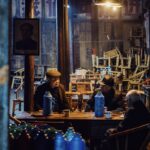Last week, I embarked on a journey to Dunhuang. Since the summer of last year, the Great Northwest of China has become incredibly popular, and naturally, I couldn’t resist the temptation to join the trend.
However, due to my busy schedule and limited time, I couldn’t afford a 6-7 day long trip to the Northwest. Therefore, I had to opt for destinations like Dunhuang and Zhongwei, which are perfect for short trips of 4 days and 3 nights, or even 3 days and 2 nights.
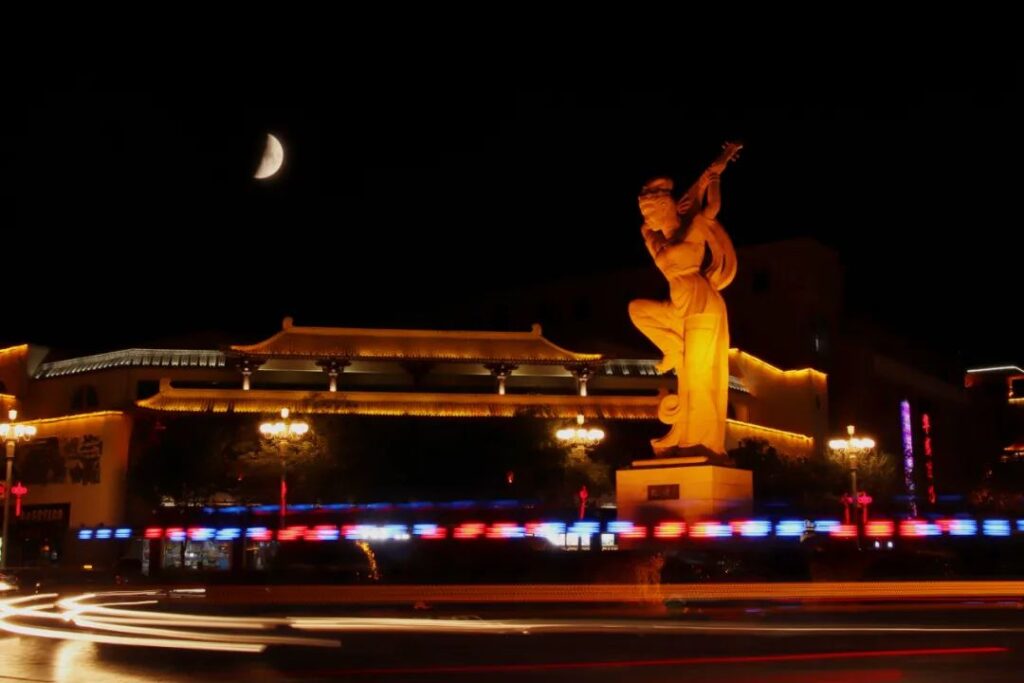
If you have limited vacation time but still want to explore the Great Northwest, you might want to consider these two destinations.
Today, let’s talk about Dunhuang.
The Great Northwest that you’ve been eagerly awaiting is finally here! When I write travel guides, I don’t like to make things up. If you ask me to write about a place I haven’t been to, I simply can’t do it.
But once I’ve visited a place, I’m good at summarizing and drawing conclusions.
This is because I often chat with locals and ask them how to arrange itineraries, how to explore, and where to eat.
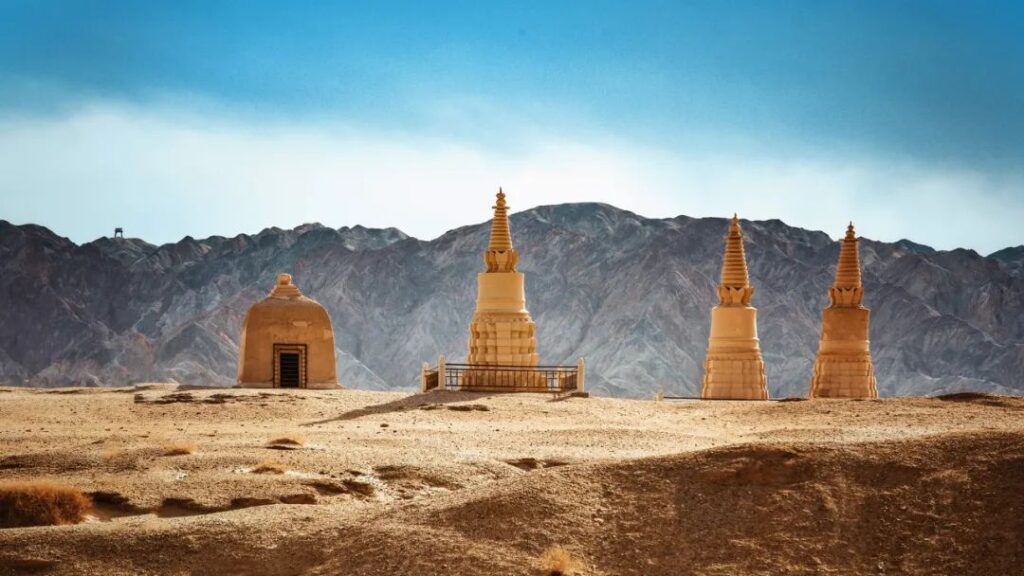
Speaking of place names in Gansu, they all have a poetic and picturesque quality. Names like Jiuquan, Zhangye, Wuwei, Jiayuguan, Dunhuang, Tianshui, Longnan… they all sound pleasant.
Dunhuang is no exception. “Dun” means grand, and “huang” means prosperous. It was named Dunhuang because it opened up the Western Regions. From the moment of its birth, this city was destined to be extraordinary.

Dunhuang has a rich history
The Mogao Grottoes with a history of over a thousand years, the Mogao Caves with a history of over two thousand years, and the Silk Road with a history of over seven thousand years.
During the Han Dynasty, Dunhuang was a strategic location on the Silk Road. Zhang Qian’s diplomatic mission to the Western Regions and Huo Qubing’s resistance against the Xiongnu were all related to Dunhuang.
In the Tang Dynasty, Xuanzang set out from the capital Chang’an, passed through Liangzhou, exited the Yumen Pass between Guazhou and Dunhuang, and traveled westward. After enduring hardships, he finally reached India.
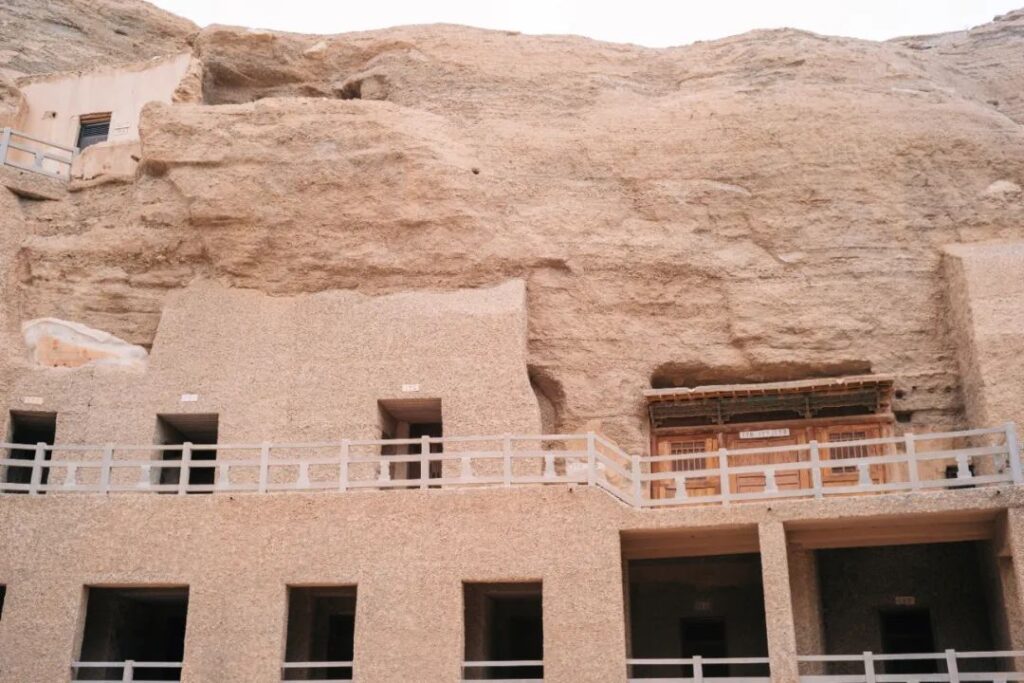
Dunhuang has been very popular in recent years, and it should be said that the entire Great Northwest has been quite popular lately.
Yesterday, I was chatting with a friend from Spring Airlines, and she told me that the Spring Airlines flights from Hangzhou to Lanzhou are almost all full-fare tickets until November, and they only sell individual tickets because they have no worries about selling them.
Lanzhou is often the first stop in the Great Northwest, and most people going to Lanzhou will also visit Dunhuang.
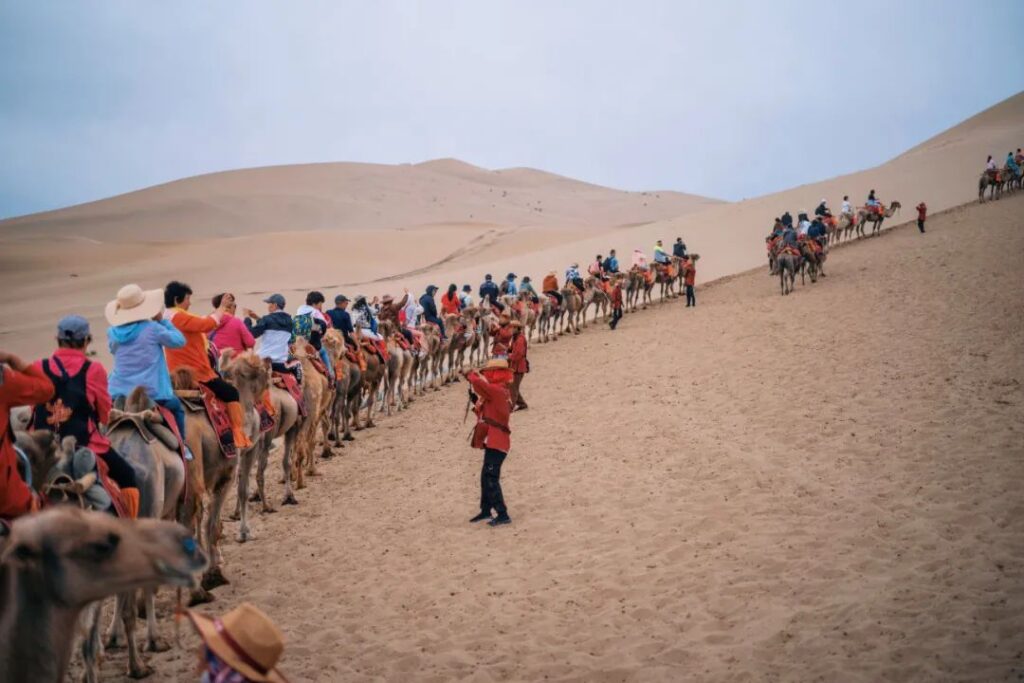
Must-visit attractions in Dunhuang
The main attractions in Dunhuang are the Mogao Grottoes and the Mingsha Mountain and Crescent Lake.
The Mogao Grottoes need no introduction. With 735 caves, 2,415 colored sculptures, 45,000 square meters of murals, and over 70,000 manuscripts…
There’s also the regrettable Library Cave.
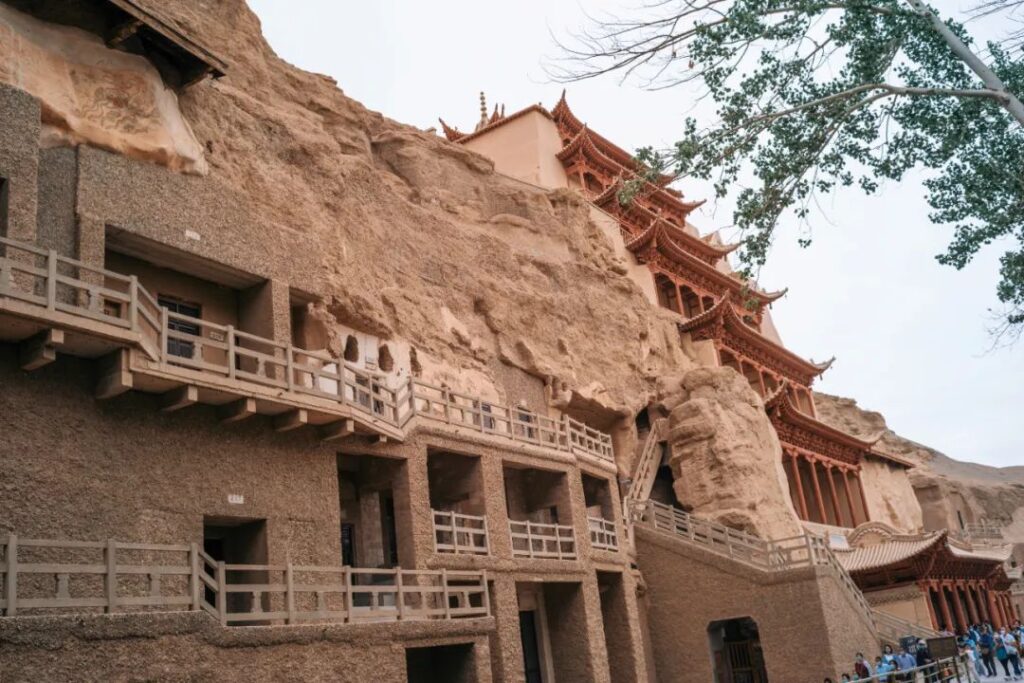
As the great master of Oriental studies, Ji Xianlin, once said, “There are only four cultural systems in the world that have a long history, vast territory, independent system, and far-reaching influence: China, India, Greece, and Islam. There is no fifth one; and there is only one place where these four cultural systems converge, and that is Dunhuang in China. There is no second one.”
So when you go to Dunhuang, you can skip everything else, but you must visit the Mogao Grottoes.
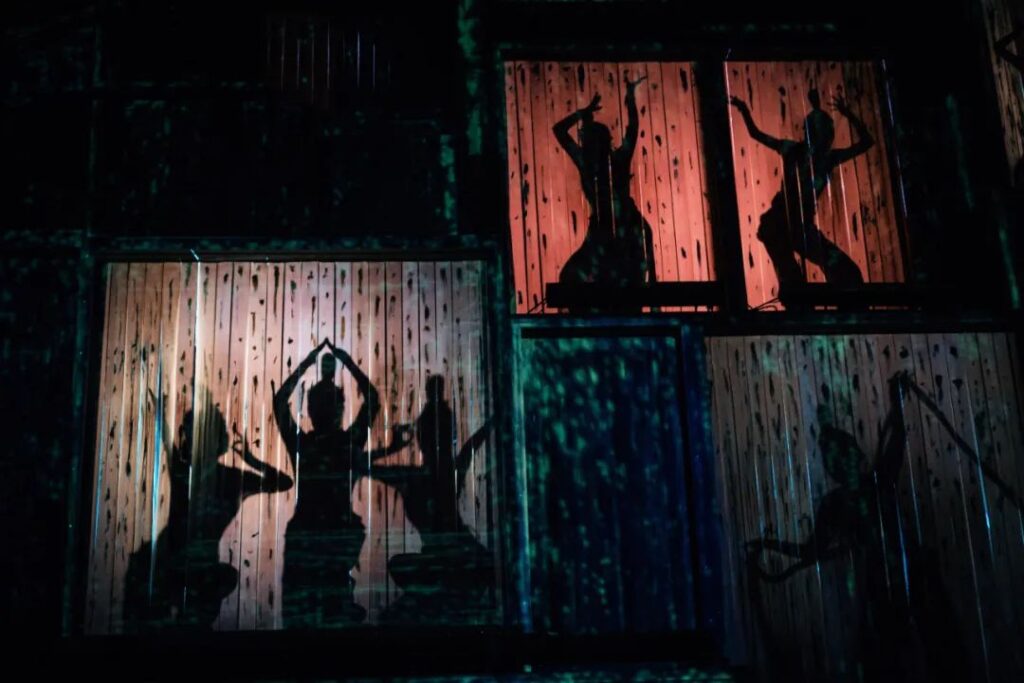
To visit the Mogao Grottoes, you also need to make a reservation in advance. The regular ticket includes 8 caves and 2 digital movies (238 yuan), while the emergency ticket only allows you to see 4 caves without the digital movies (100 yuan). If you try to purchase tickets on the same day, you might not even be able to get the emergency tickets.
You can easily purchase tickets directly on the WeChat mini-program “Mogao Grottoes Reservation Network”.
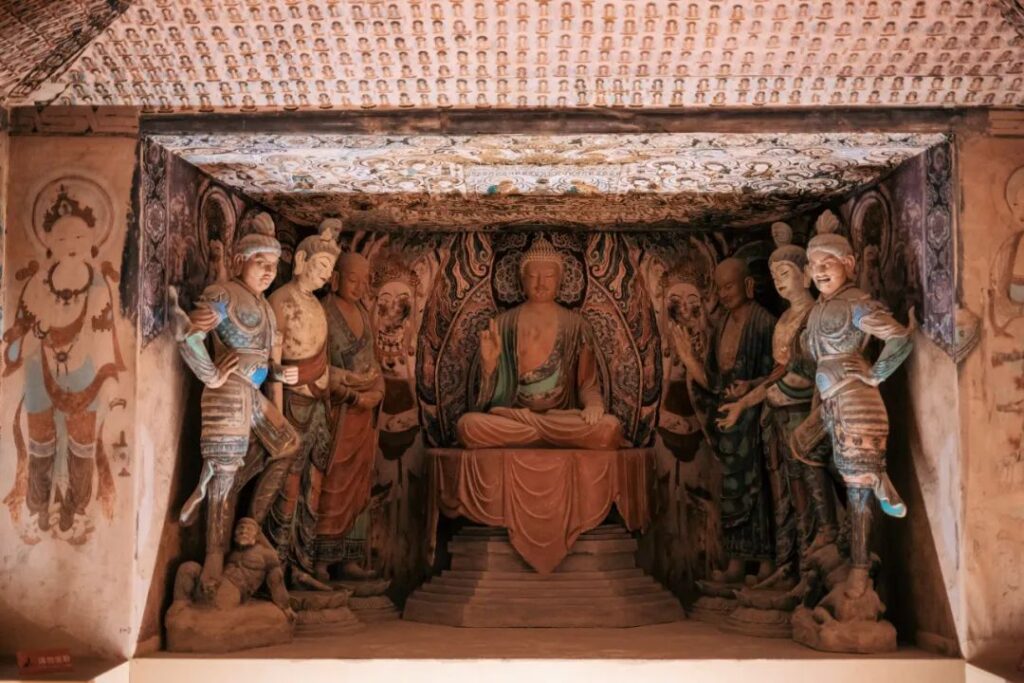
After visiting the Mogao Grottoes, don’t rush back. The exhibition halls and food courts are also worth visiting.
Basically, the Mogao Grottoes alone will take up most of the day, especially if you have purchased the regular tickets.

After seeing the Mogao Grottoes, you will definitely feel that there’s still more to explore, as even the regular tickets only allow you to see 8 caves. If you want to see more, you can visit Digital Dunhuang (e-dunhuang.com).
This is a digital archive of the Dunhuang Grottoes, where you can clearly see every cave in Dunhuang. Some caves even support VR, which basically allows you to feel like you’re actually there.
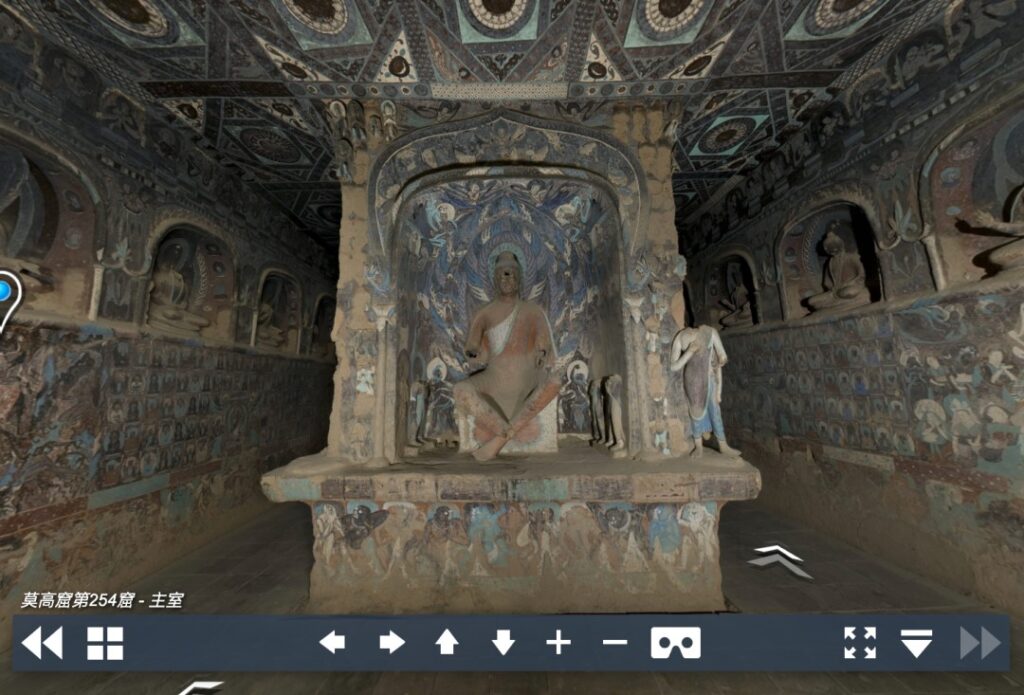
The Mingsha Mountain and Crescent Lake is another must-visit attraction in Dunhuang besides the Mogao Grottoes.
This is an oasis in the desert, a crescent-shaped oasis.
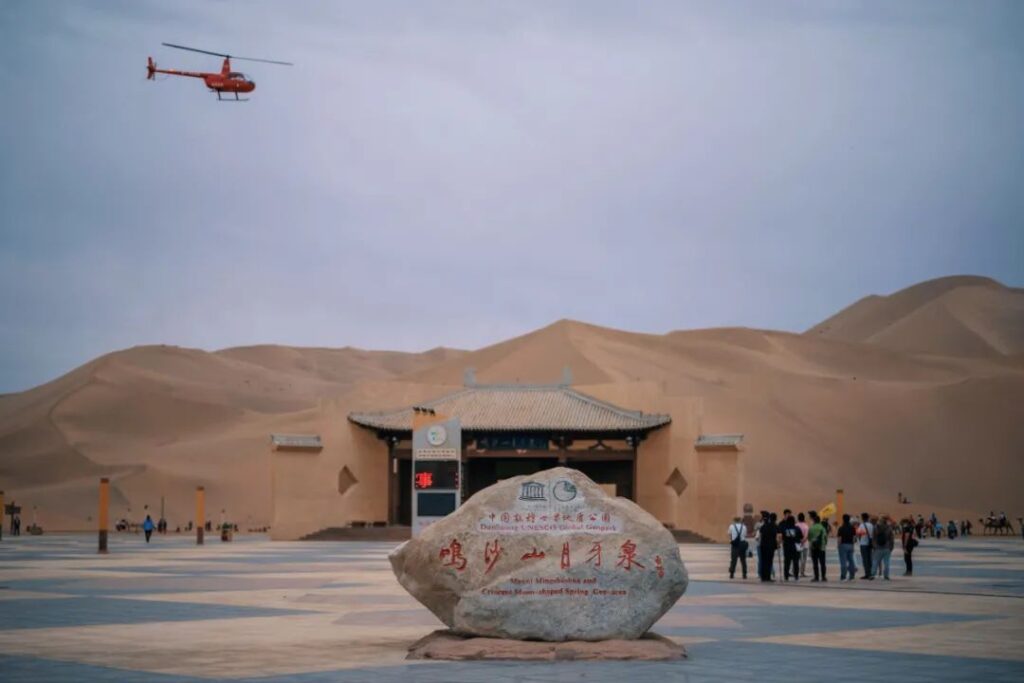
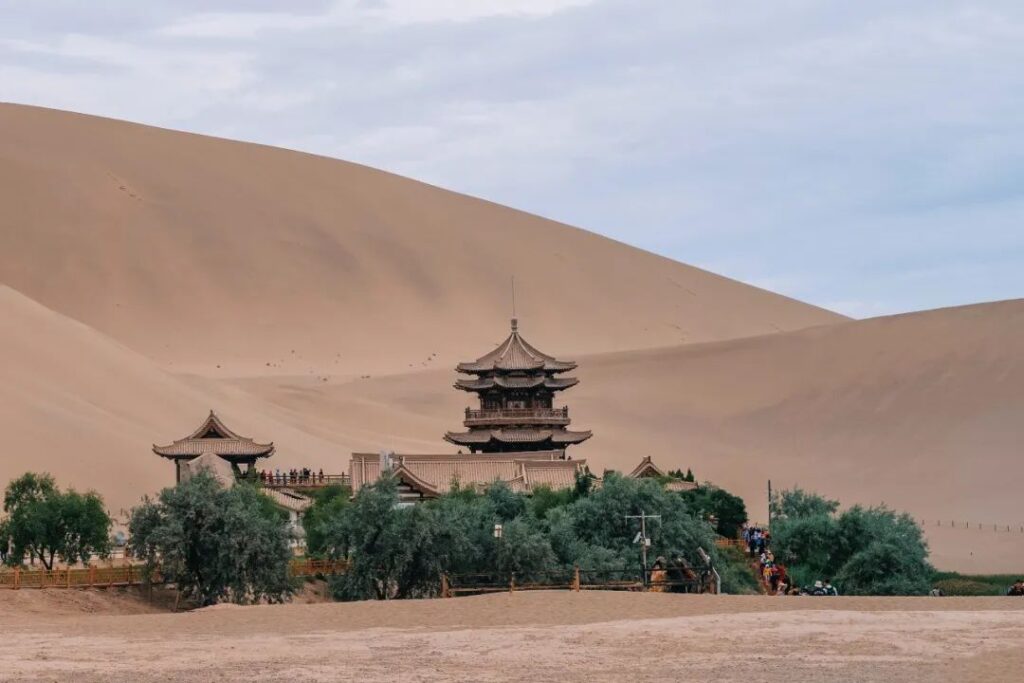
You can ride camels at Mingsha Mountain. Last year, during the National Day holiday, there was a popular meme about the Xiongnu people advancing into the Central Plains, which originated from here.
If you find camels too slow, you can also rent an all-terrain vehicle.
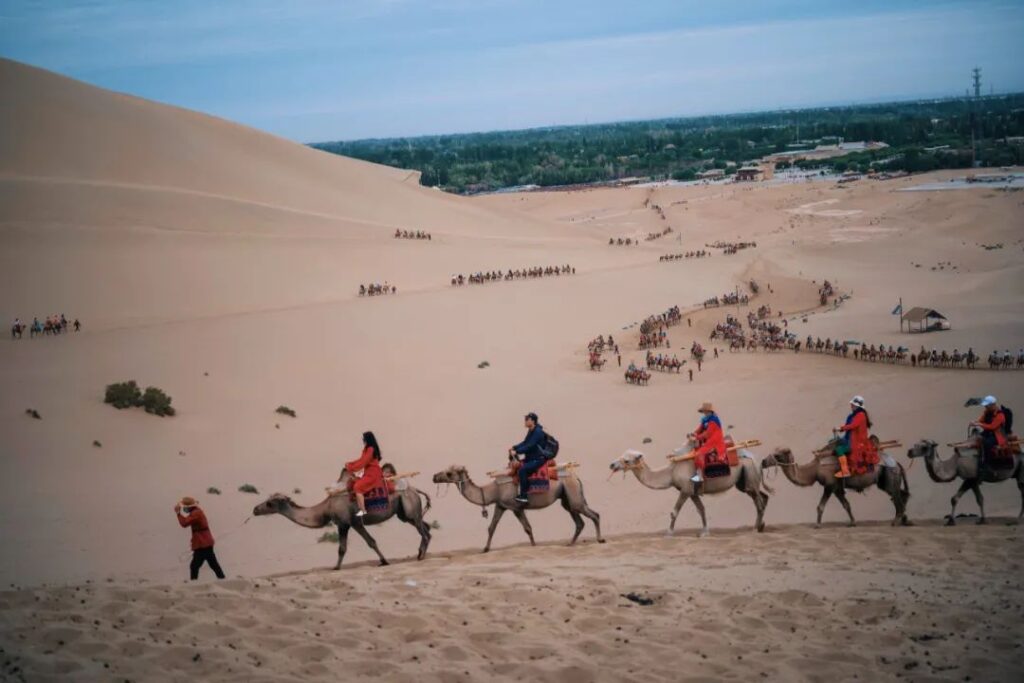
Actually, Mingsha Mountain is best viewed from the sky. Spend 480 yuan to take a powered glider, and the view of Mingsha Mountain and Crescent Lake from above is absolutely stunning. Unfortunately, you’re not allowed to bring your phone up in the sky, so you can’t take photos.
The wealthy can take a helicopter for an even more thrilling experience.
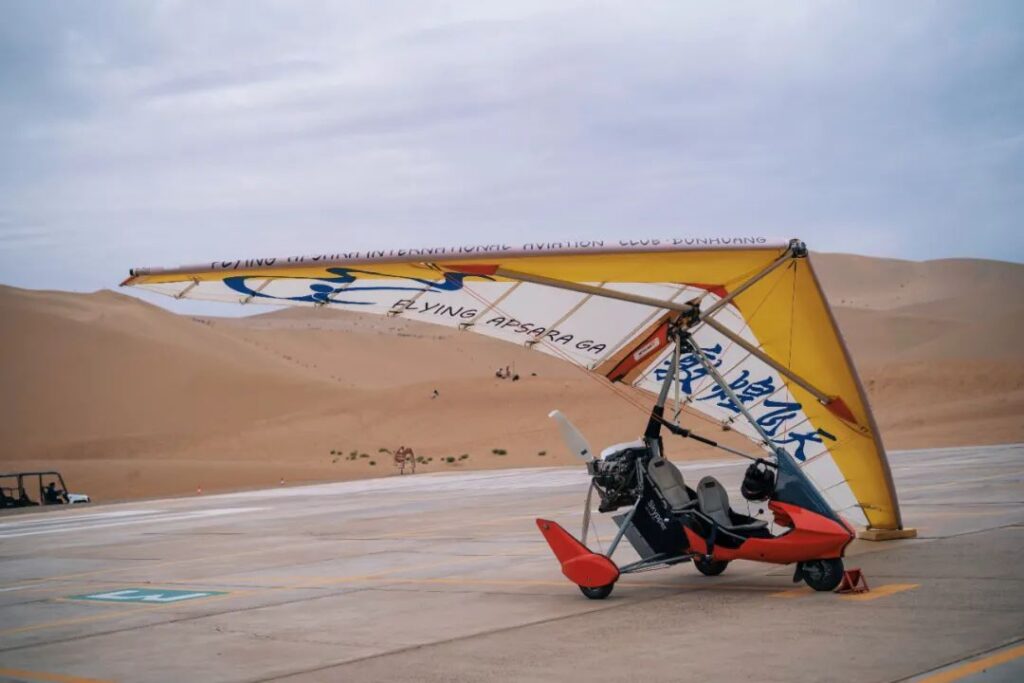
Mingsha Mountain is also suitable for wearing bright-colored clothes and taking travel photos. A desert Hanfu or flying fairy costume photoshoot should be quite nice. Anyway, I saw groups and groups of young ladies taking photos at Mingsha Mountain.
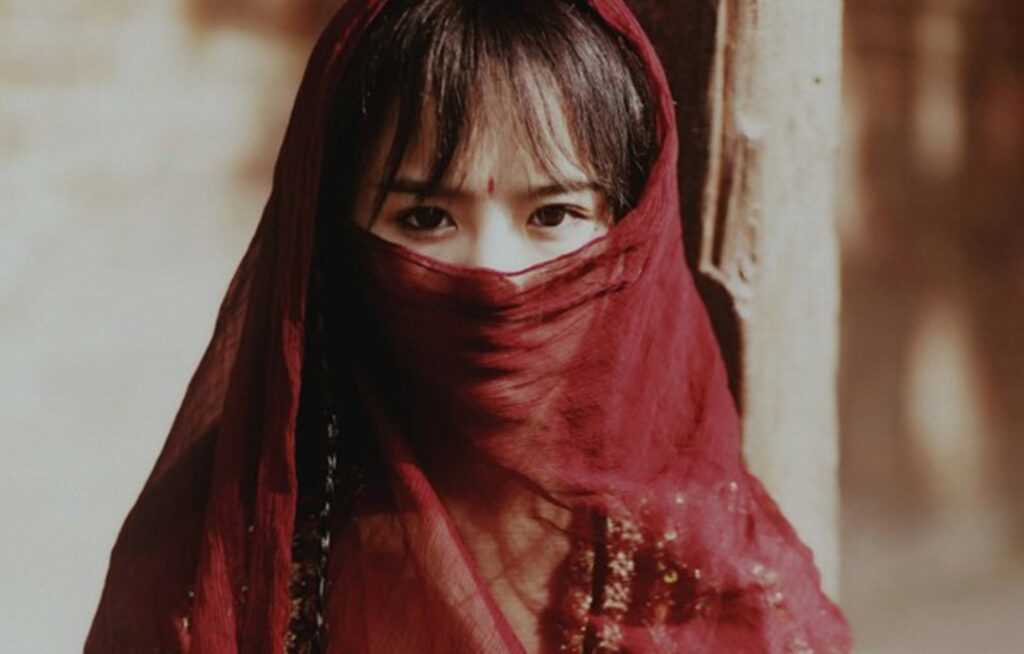
Recommended Itinerary for Dunhuang
If you’re going to Dunhuang, I suggest staying for 3 days and 2 nights, or 4 days and 3 nights. This way, you can enjoy your trip more comfortably.
Dunhuang has a total of 4 routes, each taking a day to complete.
- Dunhuang Main Route: Mogao Grottoes – Mingsha Mountain and Crescent Lake – Dunhuang Museum – Leiyin Temple – Western Jin Dynasty Mural Tomb
- Dunhuang West Route: West Thousand Buddha Caves (skip if you’ve visited Mogao Grottoes) – Yangguan Pass – Yumen Pass – Han Dynasty Great Wall – Hecheng City – Yadan National Geological Park (Yadan reopened on June 23)
- Dunhuang East Route: East Thousand Buddha Caves (skip if you’ve visited Mogao Grottoes) – Son of the Earth Sculpture – Suoyang City – Yulin Grottoes
- Dunhuang North Route: Mengke Glacier – Akesai Film and Television Base (filming location of The Nine-Story Demon Tower)
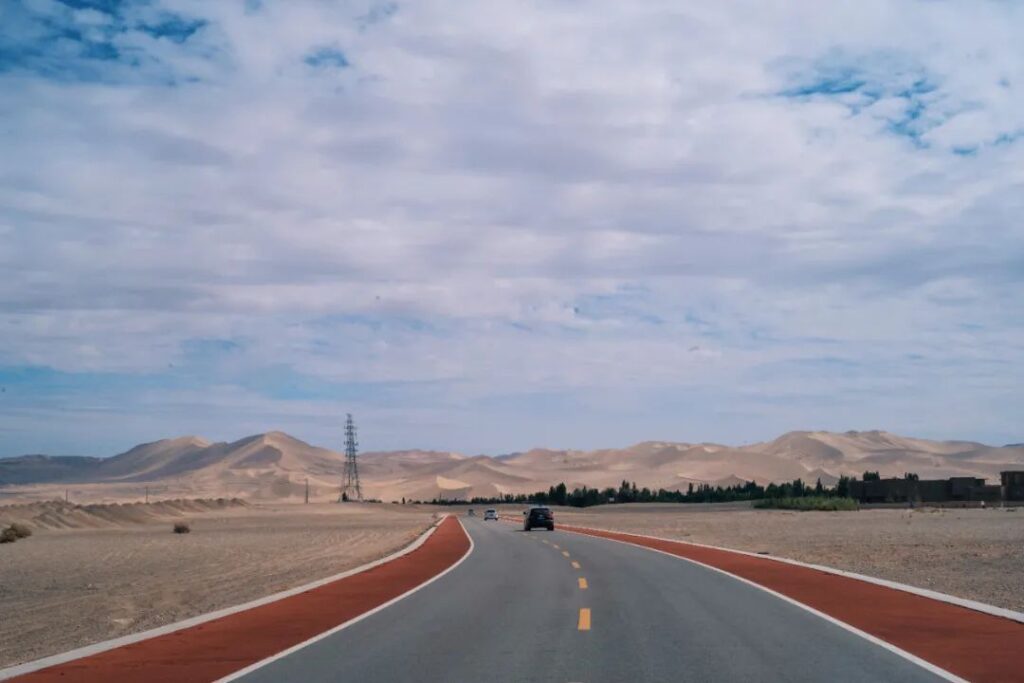
If you’re pressed for time, take the Dunhuang Main Route. All the attractions are within or near the city, so you can easily take a taxi.
Apart from the Mogao Grottoes and Crescent Lake, Leiyin Temple and Dunhuang Museum are also highly recommended. Both attractions are free of charge.
Leiyin Temple has a grand hall housing tens of thousands of Buddha statues. I didn’t count, but they were densely packed.
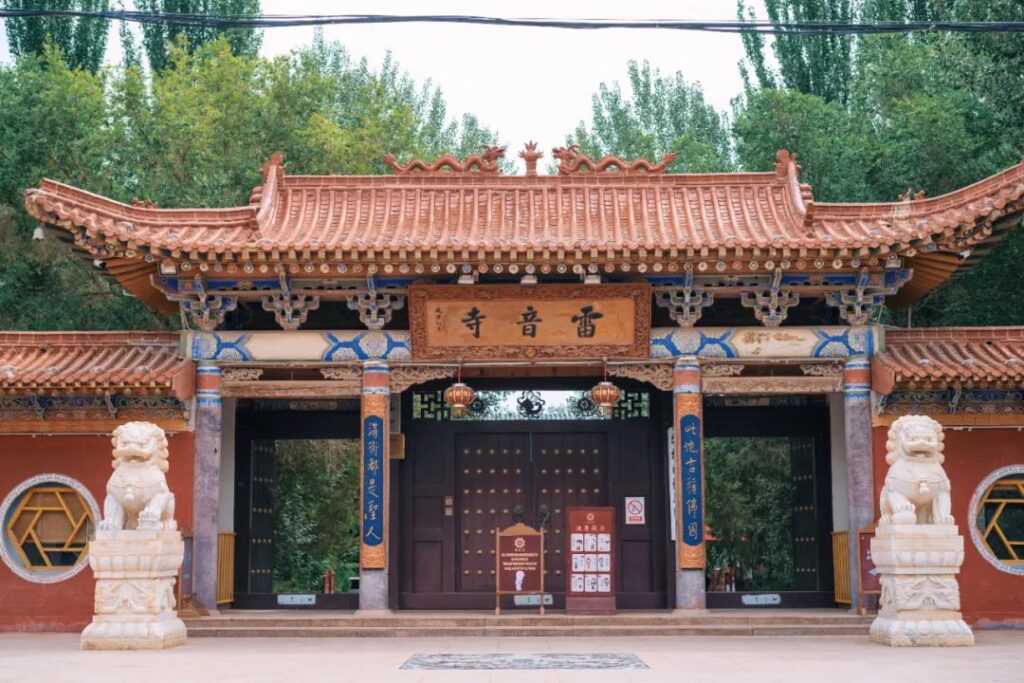
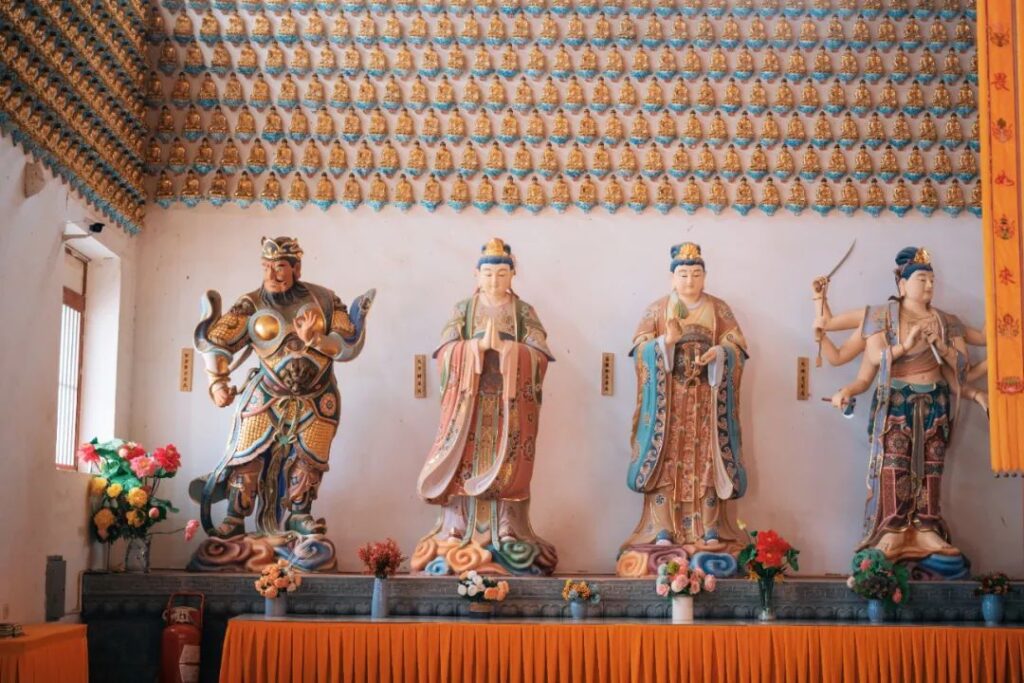
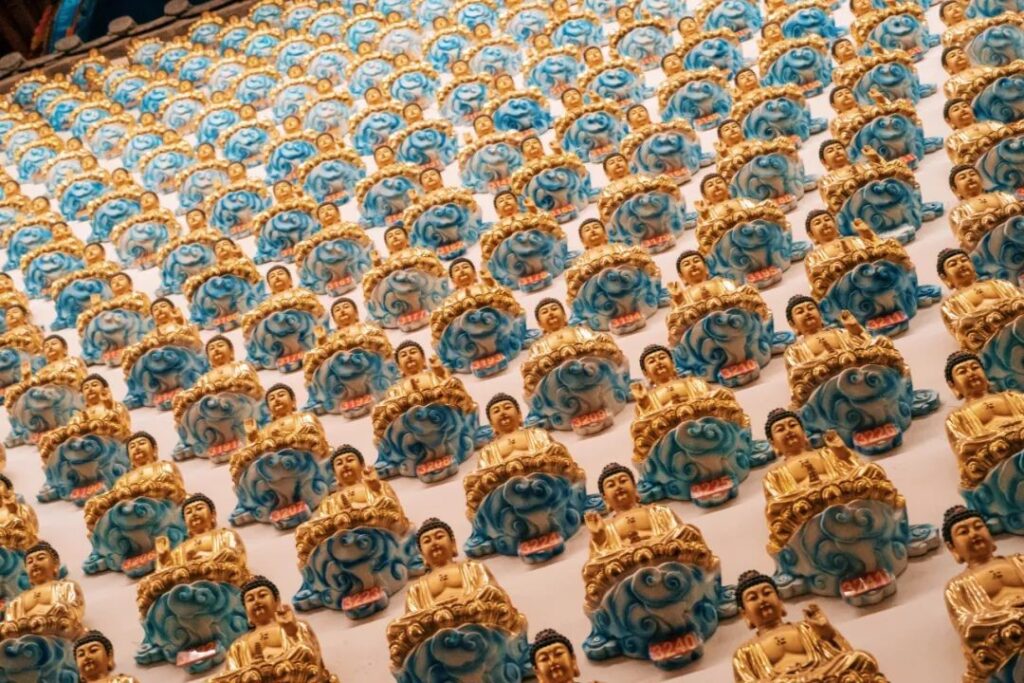
As for Dunhuang Museum, it’s best to visit first, as it provides a foundation for understanding Dunhuang as a whole. After visiting here, you’ll at least have some context when you go to the Mogao Grottoes.
If you take your time and examine the exhibits closely, Dunhuang Museum can take half a day to explore.


If you have two full days, the Dunhuang West Route is also worth visiting. The main attractions are Yumen Pass, Yangguan Pass, and Hecheng City.
The current Yumen Pass is just a small square-shaped fortress. Yumen Pass is ultimately desolate, and most people come here because of the saying, “The spring breeze does not pass through Yumen Pass.”
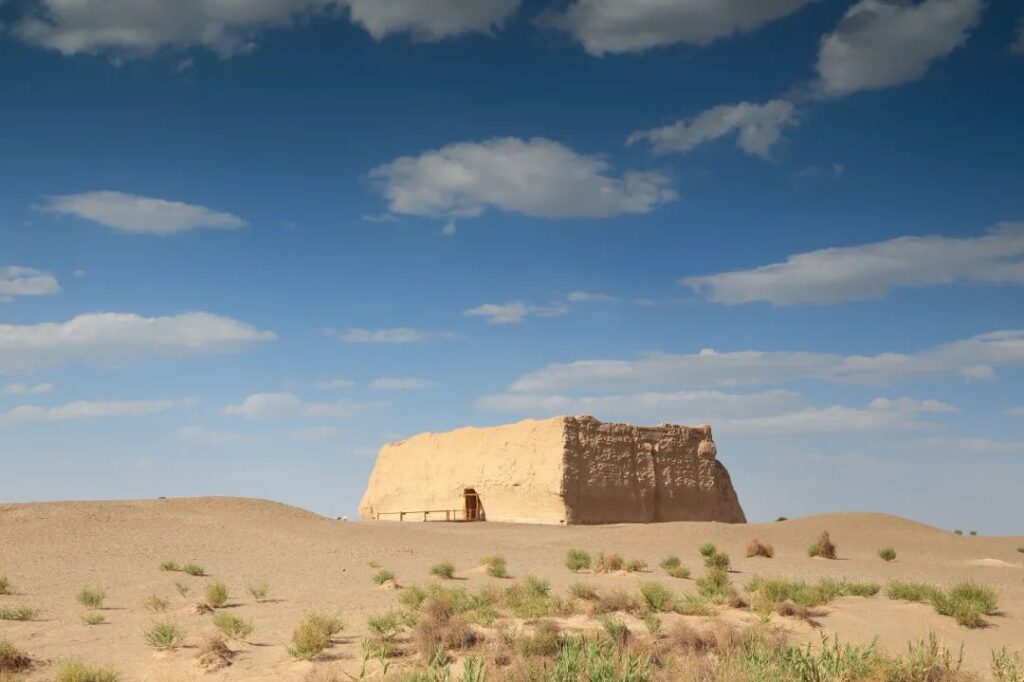
As for Yangguan Pass, people visit for Wang Wei’s famous line, “Going out of Yangguan Pass, no old friends to see off.”
In fact, ancient fortresses were not as tall and majestic as one might imagine.

The scenery along the Dunhuang West Route is mostly enjoyed along the way. Driving through the uninhabited desert and Gobi, this feeling can only be experienced in the Great Northwest.
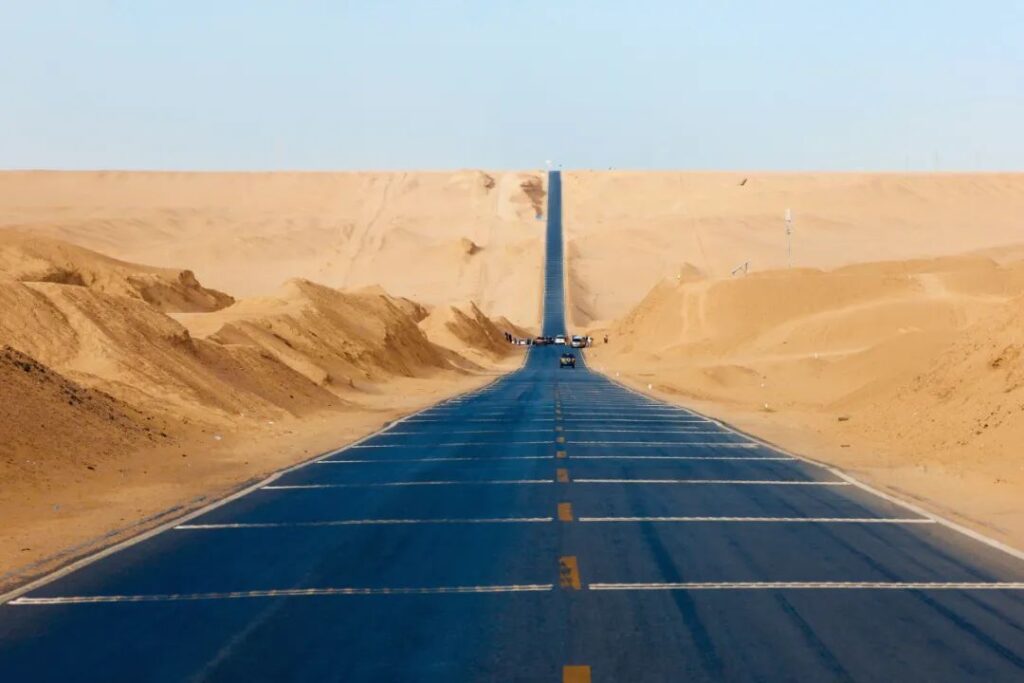
You can skip the Dunhuang East and North Routes if you don’t have time, unless you couldn’t get tickets to the Mogao Grottoes, or you’re interested in The Nine-Story Demon Tower, or you want to take photos at the Son of the Earth sculpture.
The Son of the Earth sculpture is indeed quite suitable for photography. It’s probably one of the most popular destinations in Dunhuang on Xiaohongshu (a social media platform) right now, simply because it looks good in photos.

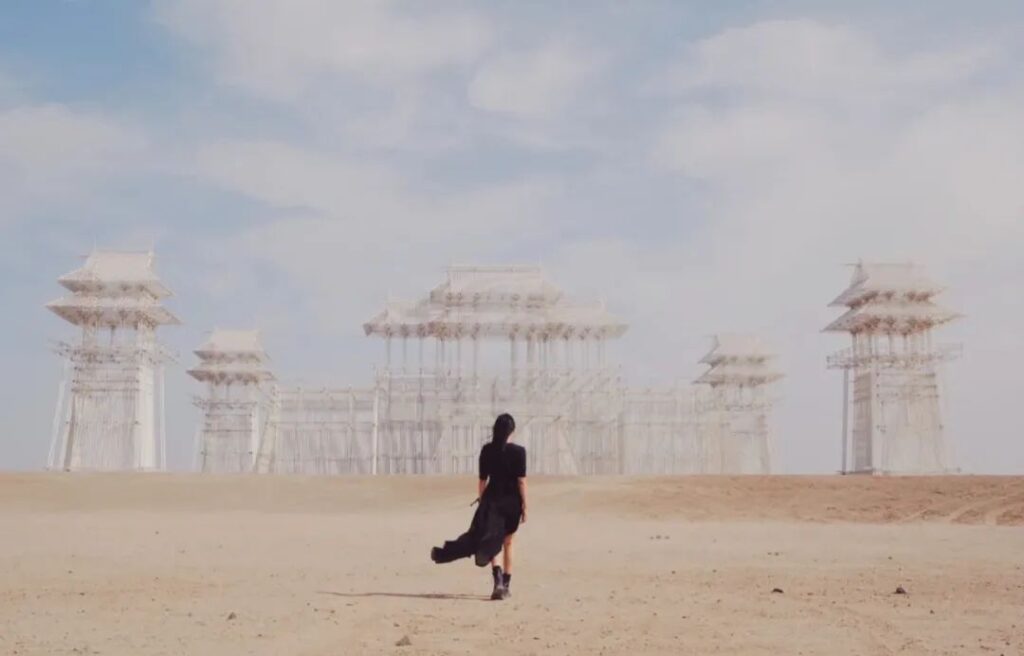
The Akesai Film and Television Base was originally Akesai Town, but due to environmental reasons, the entire town was relocated.
The old county town was gradually forgotten, so the buildings and slogans here still remain as they were in the 1990s, giving off a somewhat dilapidated feel. Later, because of the films shot here, the place gained some popularity again.
If you’ve watched the movies The Wrath of the Wind or The Nine-Story Demon Tower and want to experience the scenes from the films, you might consider visiting this place.
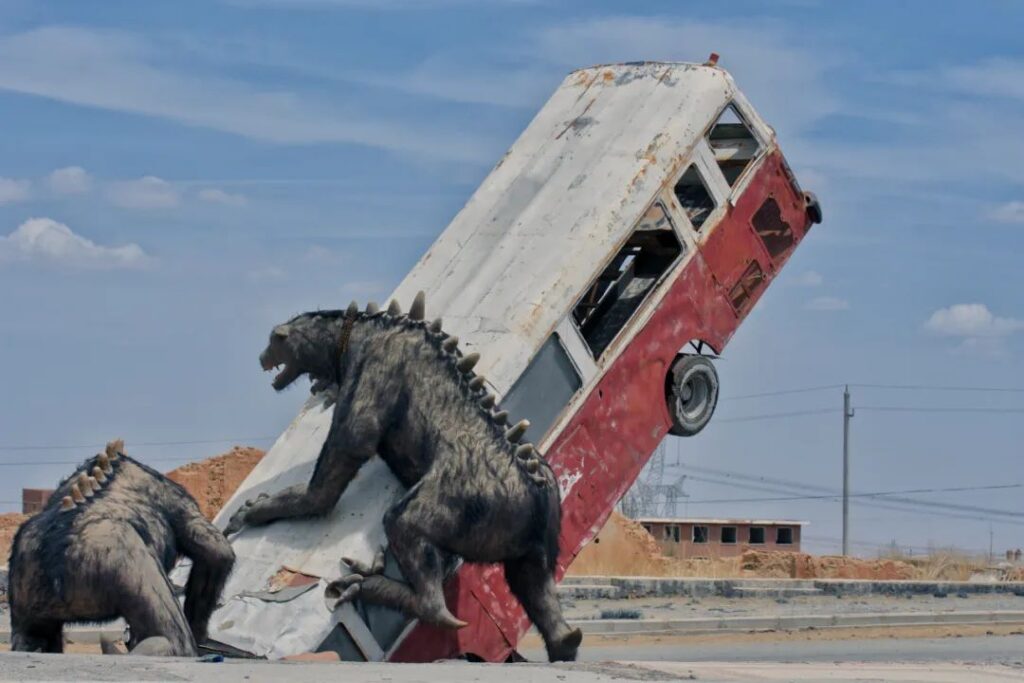
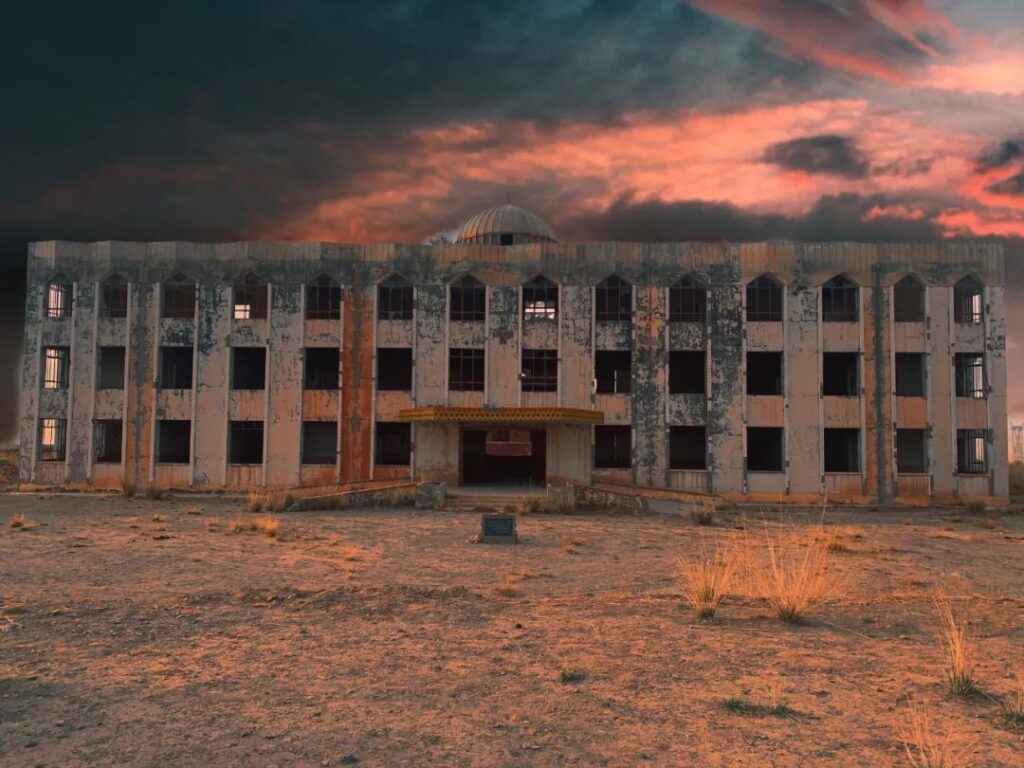
Dunhuang has three performances: “Meet Dunhuang Again,” “Dunhuang Grand Ceremony,” and “Silk Road Flower Rain.”
The difference is that “Meet Dunhuang Again” is an immersive experience, with five different scenes that switch between each other, focusing on the history of Dunhuang and the Mogao Grottoes.
“Dunhuang Grand Ceremony” is an outdoor live-action performance with a 360-degree rotating and front-to-back moving audience seating area. The downside is that it only performs after dark, and it can be quite cold in the evenings during non-summer seasons.
“Silk Road Flower Rain” is a stage play.
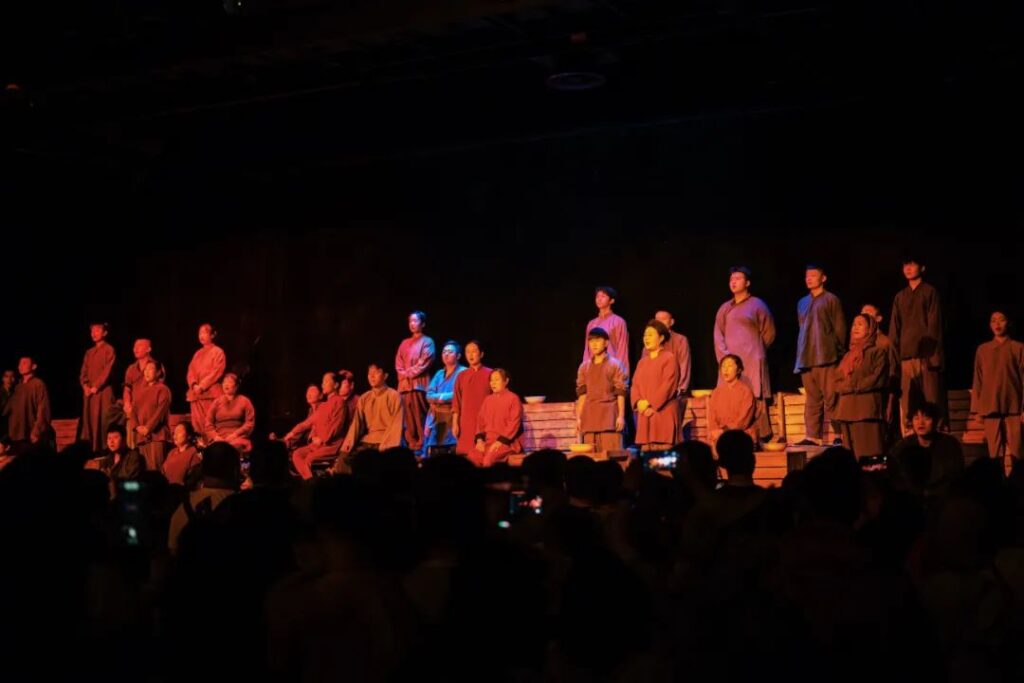
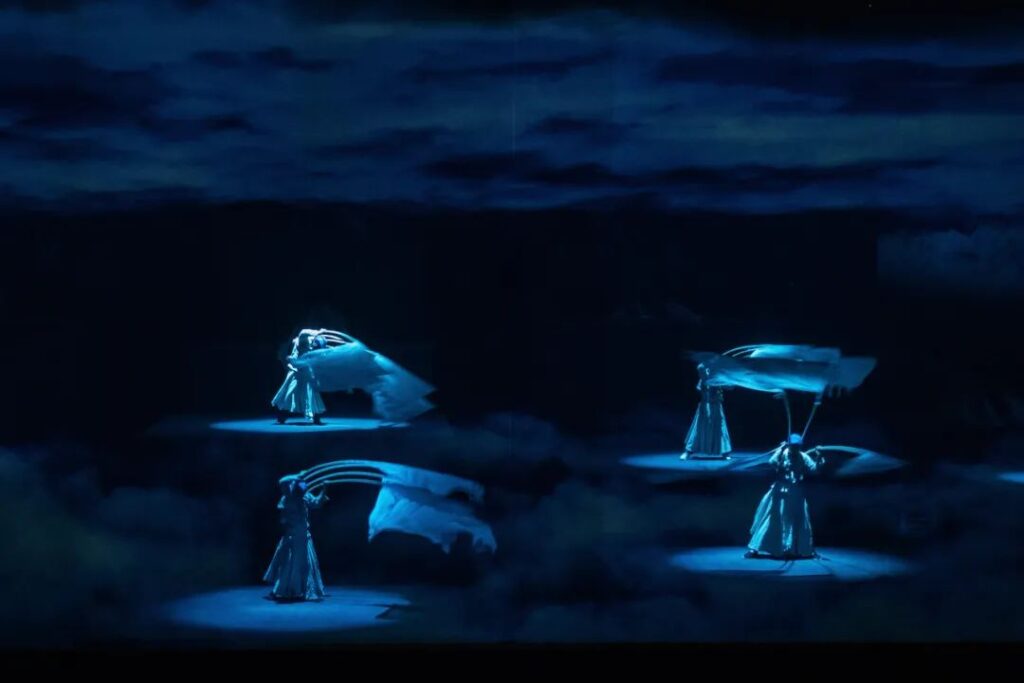
I personally recommend “Meet Dunhuang Again,” and I strongly advise everyone to watch this performance before visiting the Mogao Grottoes. On one hand, it’s due to my personal admiration for the creator Wang Chaoge. On the other hand, I’ve never seen such an immersive performance that switches between multiple scenes anywhere else. It’s truly spectacular.
My second recommendation is “Dunhuang Grand Ceremony.” Watching it live is quite stunning.
I recommend “Silk Road Flower Rain” the least, not because it’s not good, but because stage plays can be watched anywhere, so there’s really no need to go to Dunhuang specifically for it.
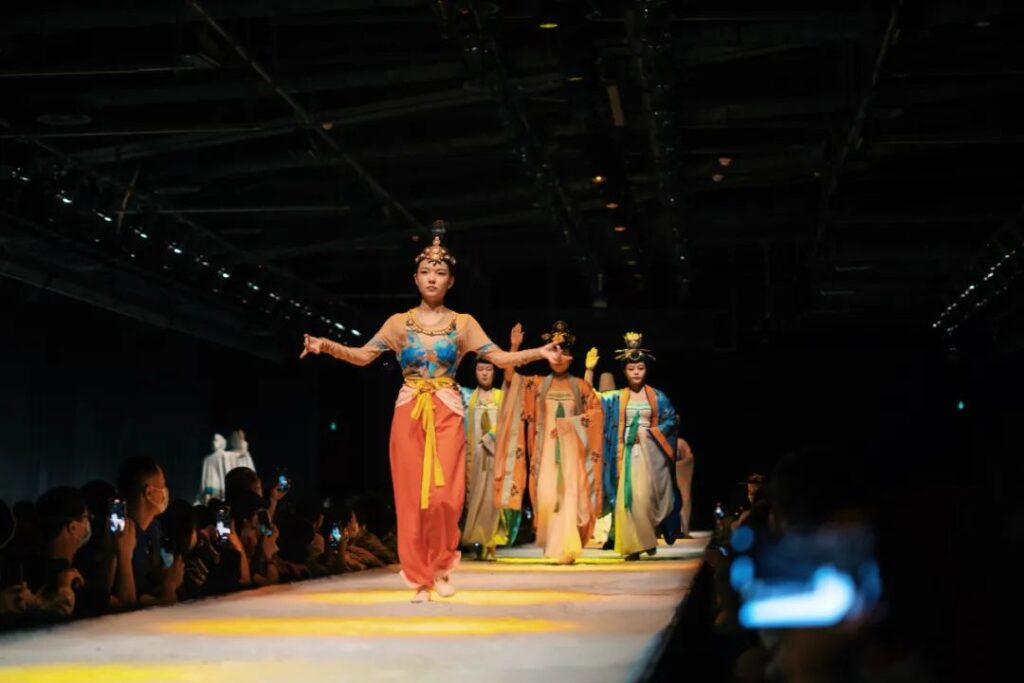

Dunhuang Night Market
In the evening, apart from watching performances, the Dunhuang Night Market is also worth visiting. In fact, you can go multiple times.
The Dunhuang Night Market has three sections: the front is all local specialty products, the middle is a food street, and the back is an open-air food court.
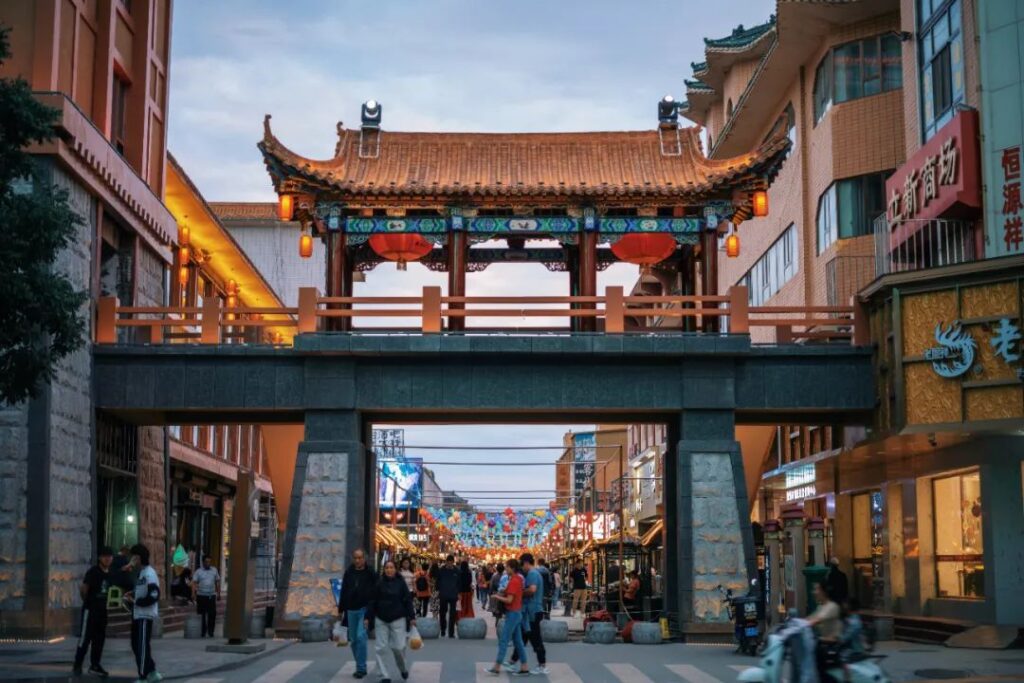
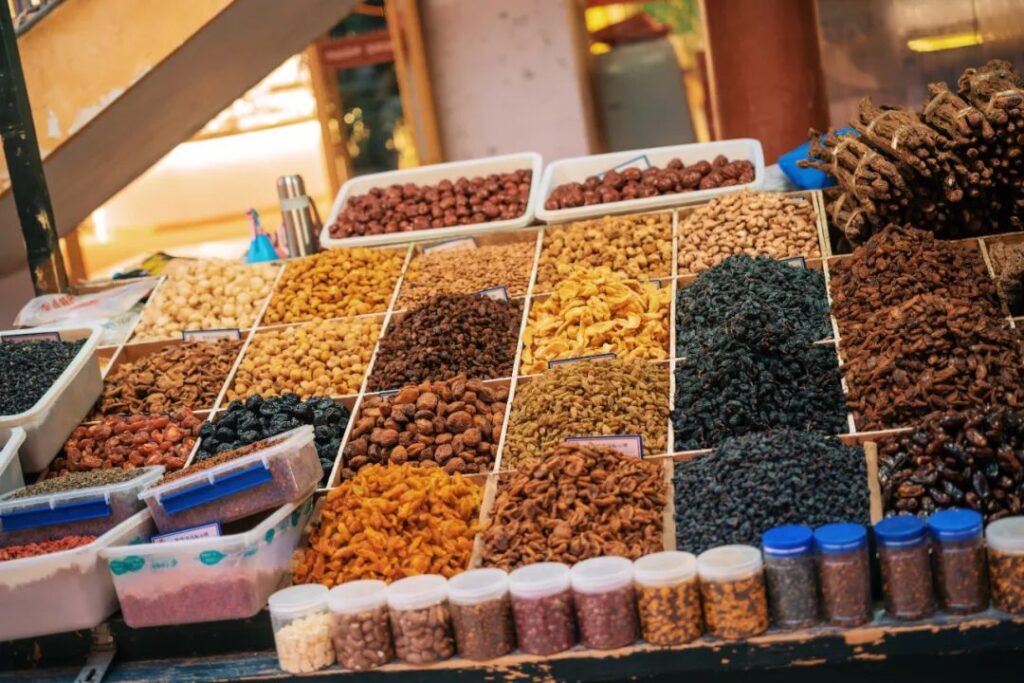
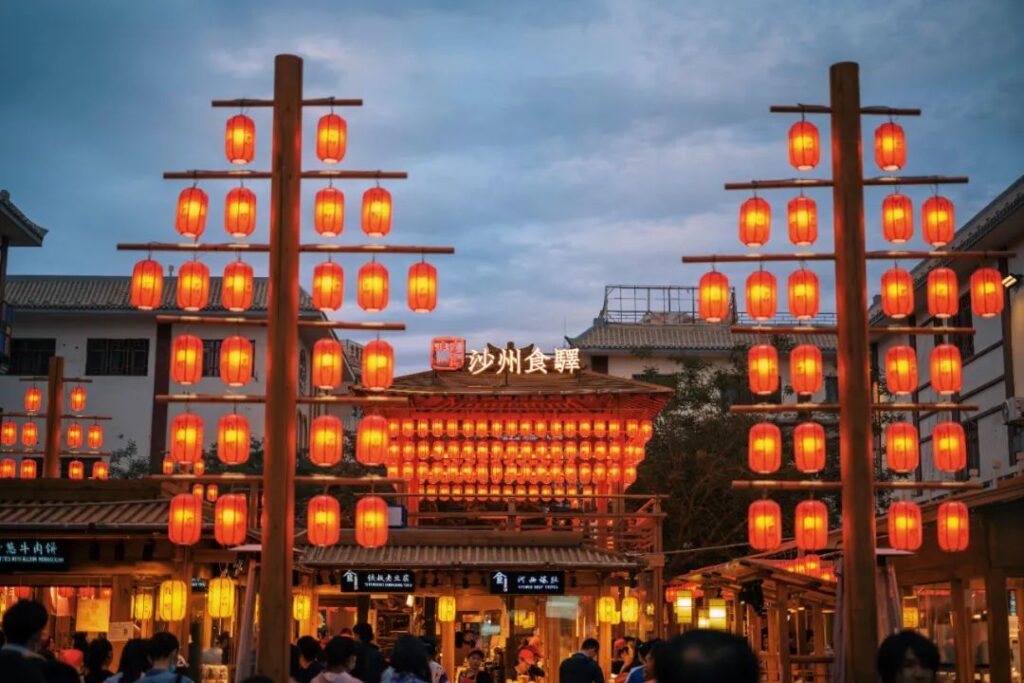
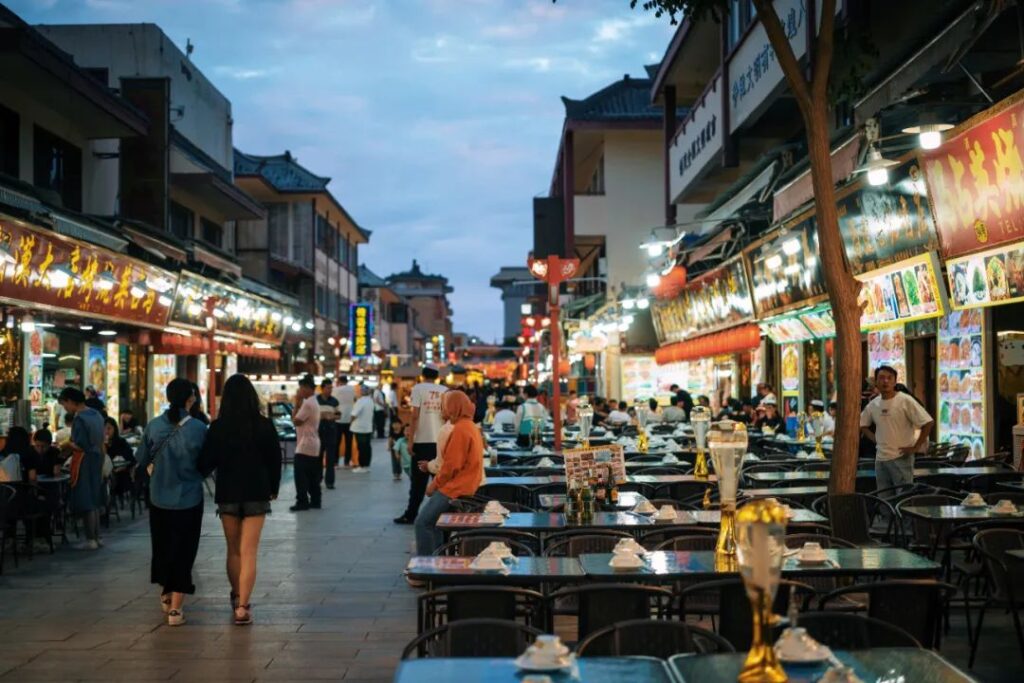
You can find all of Dunhuang’s recommended foods here, such as mutton pancakes, donkey meat noodles, red willow grilled meat, Dunhuang kang pot, fermented rice wine, Li Guang almonds, and more.
Dunhuang’s delicacies are very concentrated, delicious, and inexpensive.
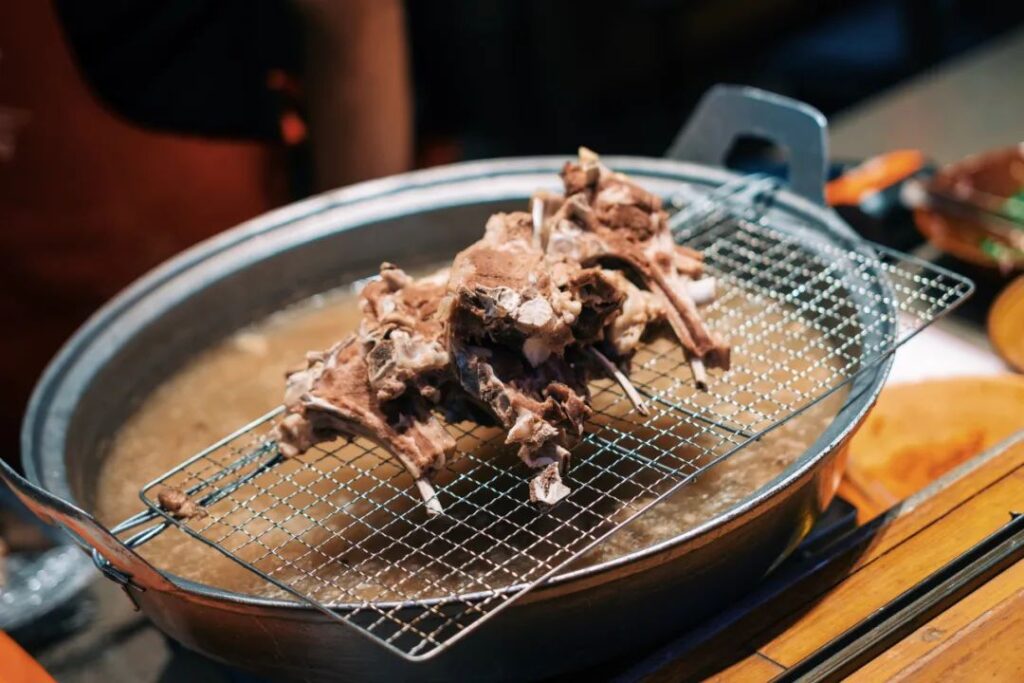
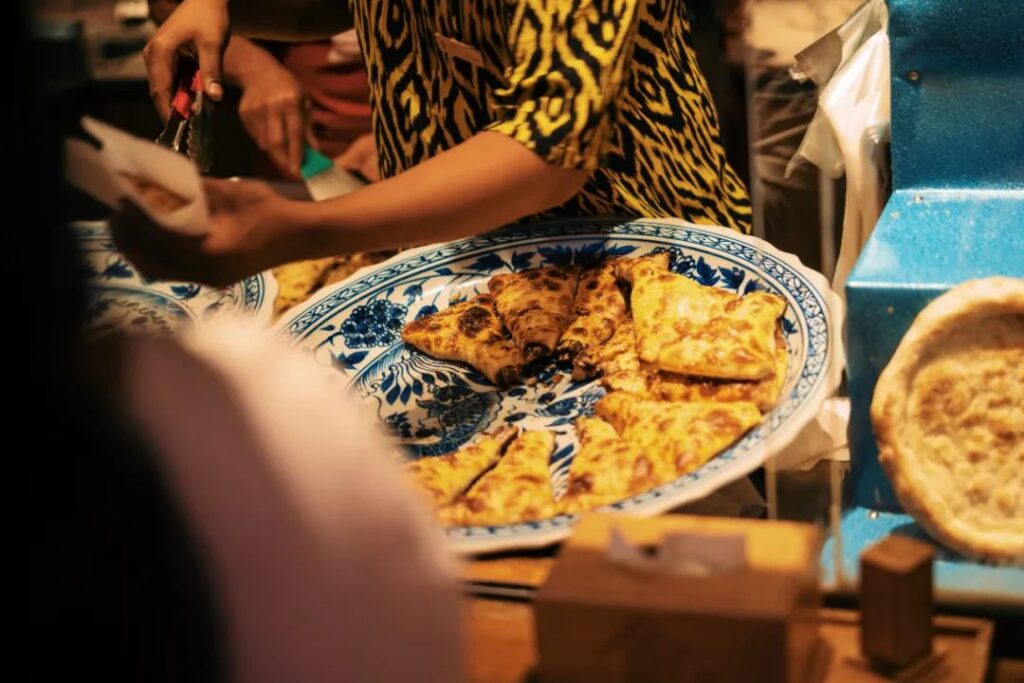
If you want to see the sunrise or sunset, I recommend watching the sunset at Yadan or the sunrise and sunset at the Singing Sand Dunes. Both places are very worthwhile.
“Smoke rises straight in the vast desert, and the setting sun is round over the long river.” The sunset in the desert is particularly magnificent.
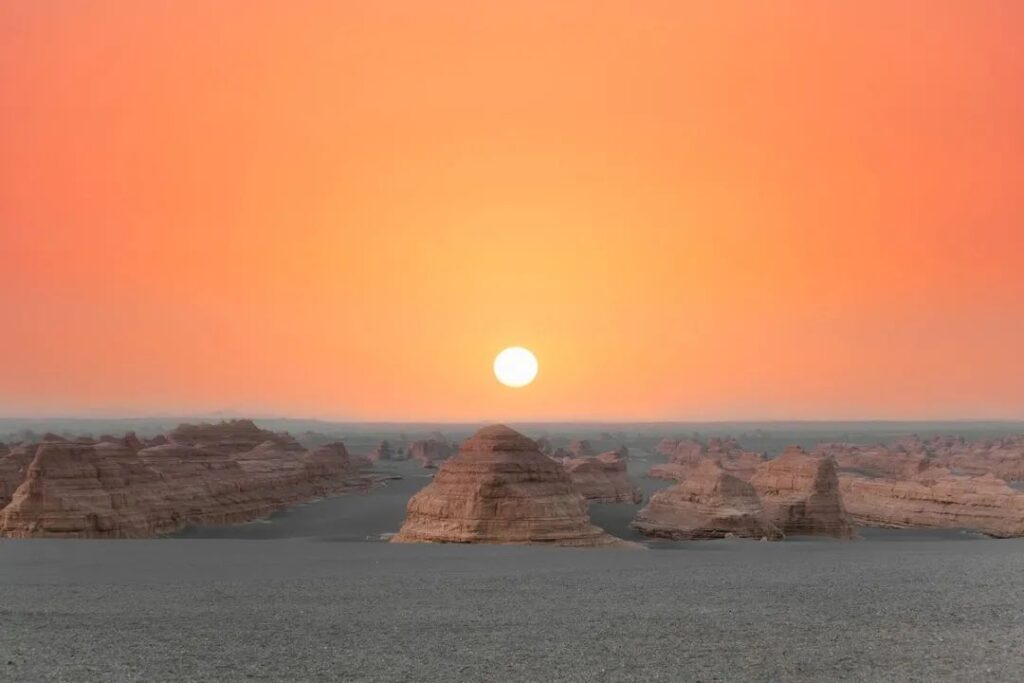
Best Time to Visit Dunhuang
The best time to visit Dunhuang is from May to November each year. During these months, the days are long. For example, when I went in mid-June, it didn’t start getting dark until around 9 pm. It’s a great time to explore.
Of course, don’t miss the three meteor showers each year.
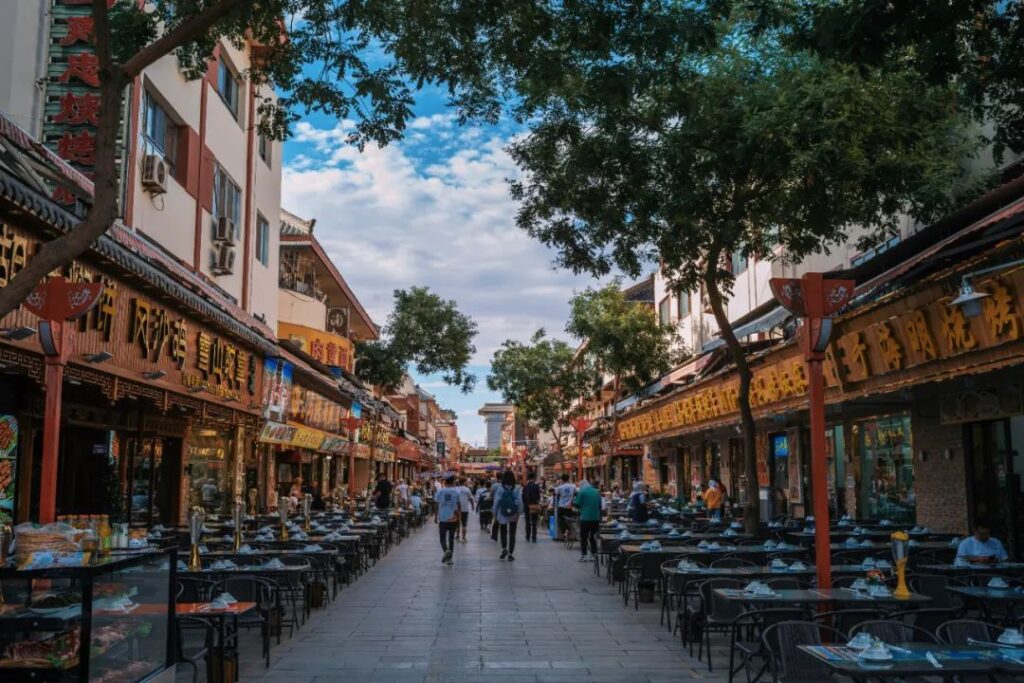
In fact, visiting during the off-season is also suitable. The scenery doesn’t go on sale just because it’s the off-season, and hotel prices in Dunhuang are very cheap during this time. At most, it might be a bit cold.
If you encounter snow, the Mogao Grottoes and Singing Sand Dunes in the snow have a unique charm.
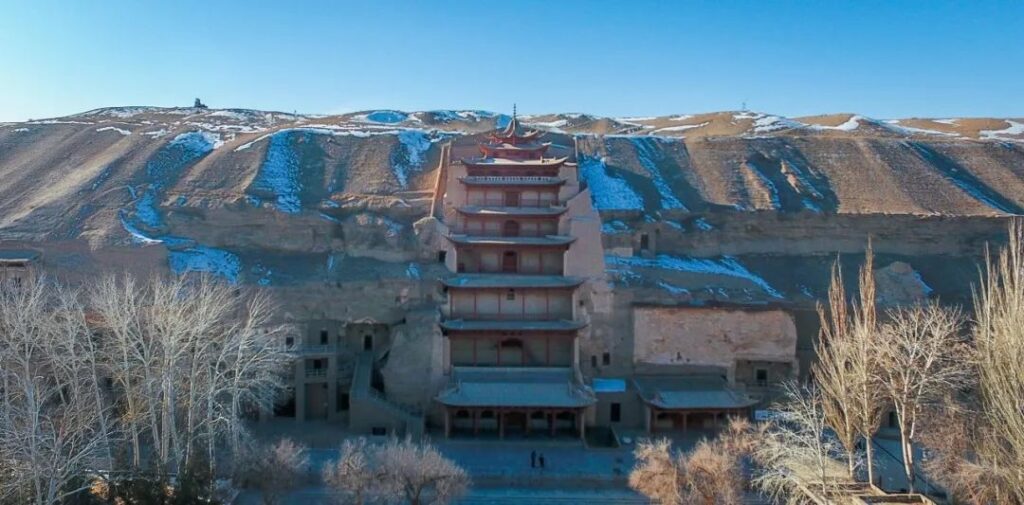
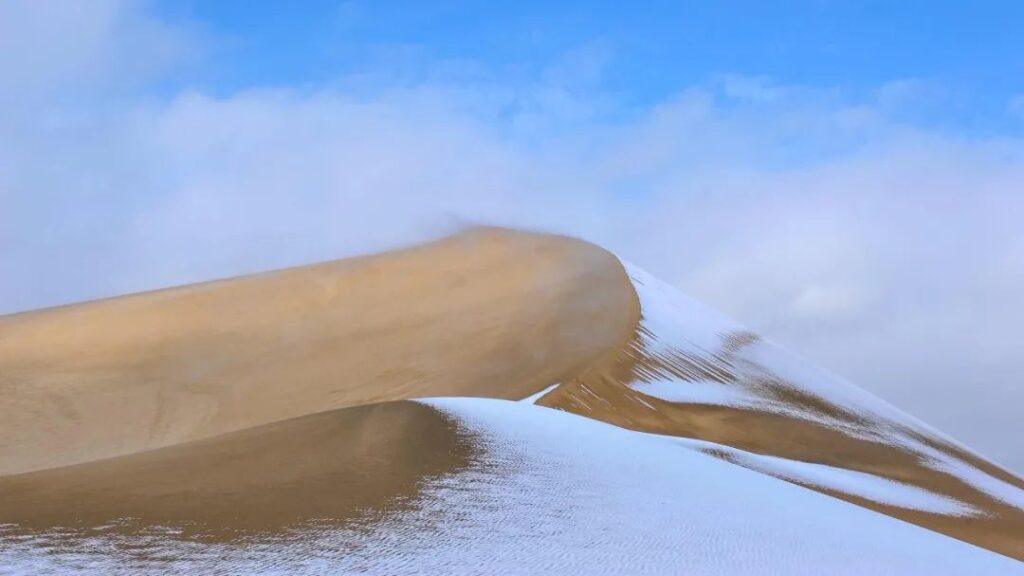
Getting to Dunhuang
Dunhuang has an airport, but during the off-season, there aren’t many domestic flights that can fly directly to Dunhuang. Most of them need to stop over in Lanzhou, Xining, Yinchuan, Xi’an, and other cities.
Dunhuang has a train station, with frequent trains to and from Xi’an, Jiayuguan, and Lanzhou daily, so you can also take the train.
Additionally, if you’re on a self-driving or chartered tour, you’ll pass through Dunhuang when taking the Qinghai-Gansu loop route.

You must book Dunhuang in advance. During the summer, flights from Hangzhou to Dunhuang (with a stopover in Lanzhou) are all full-fare tickets, costing over 4,000 yuan for a round trip.
The Great Northwest is extremely popular this year, especially during the summer.
It’s unaffordable, truly unaffordable.
Try to avoid the summer if possible.
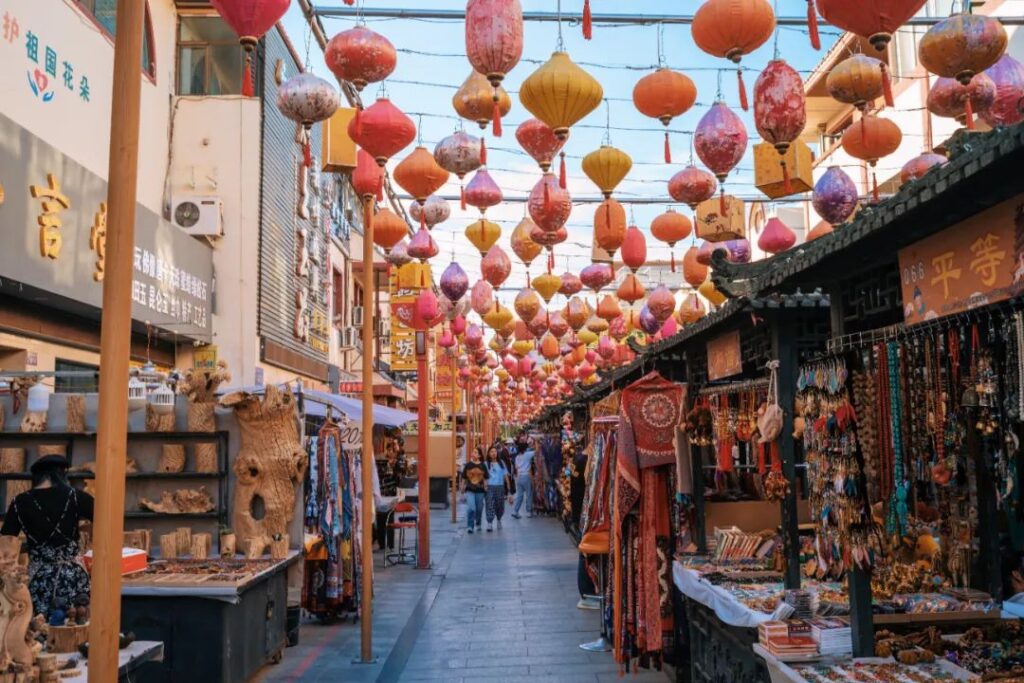
Where to Stay in Dunhuang
There are three local hotels that are quite good: Dunhuang Villa, Tianhe Hotel, and Kailai.
Dunhuang Villa is the most well-established, built in 1995, but it is indeed high-end and classy. When I went to Dunhuang this time, I had a meal there (mainly to see the hotel) and found it to be much better than I had imagined, probably because it was renovated in 2018.
Leiyin Temple is located opposite Dunhuang Villa, and the Dunhuang Grand Ceremony performance is also next to Dunhuang Villa.
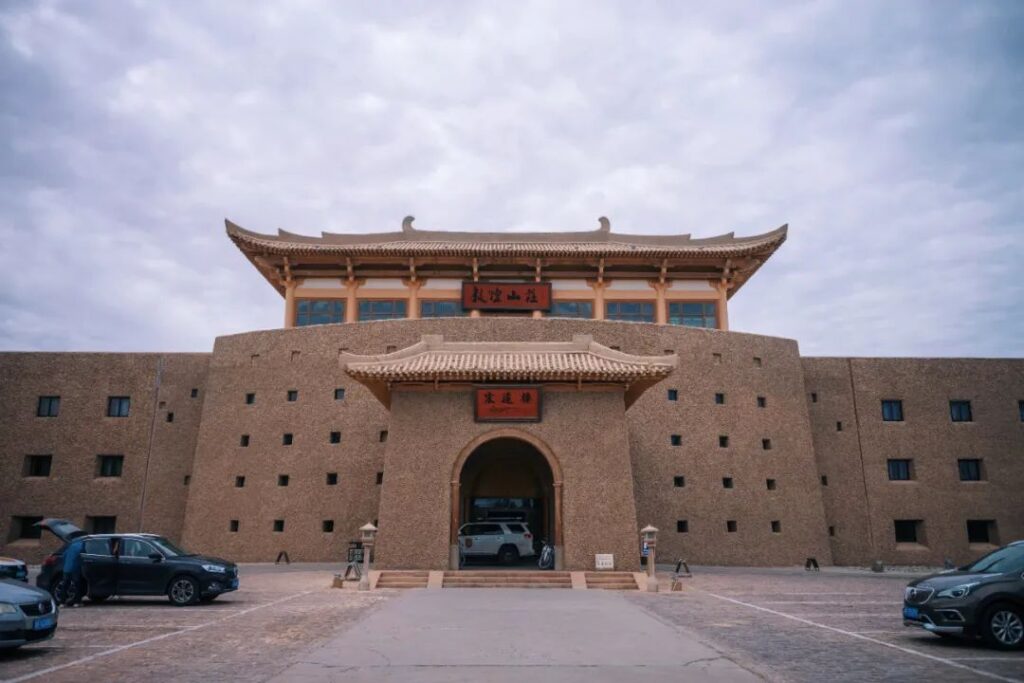
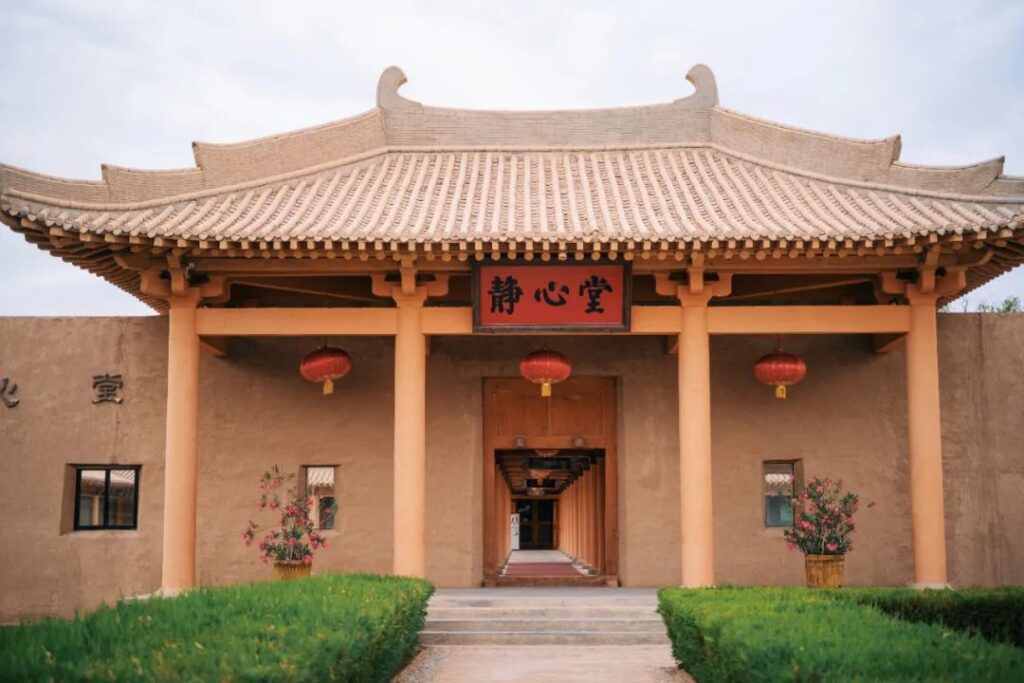
Tianhe Hotel was built by Dunhuang’s richest man and opened in 2020. The quality is not a problem. Kailai was initially a supporting hotel for the Dunhuang Cultural Expo but later turned to the market economy as well.
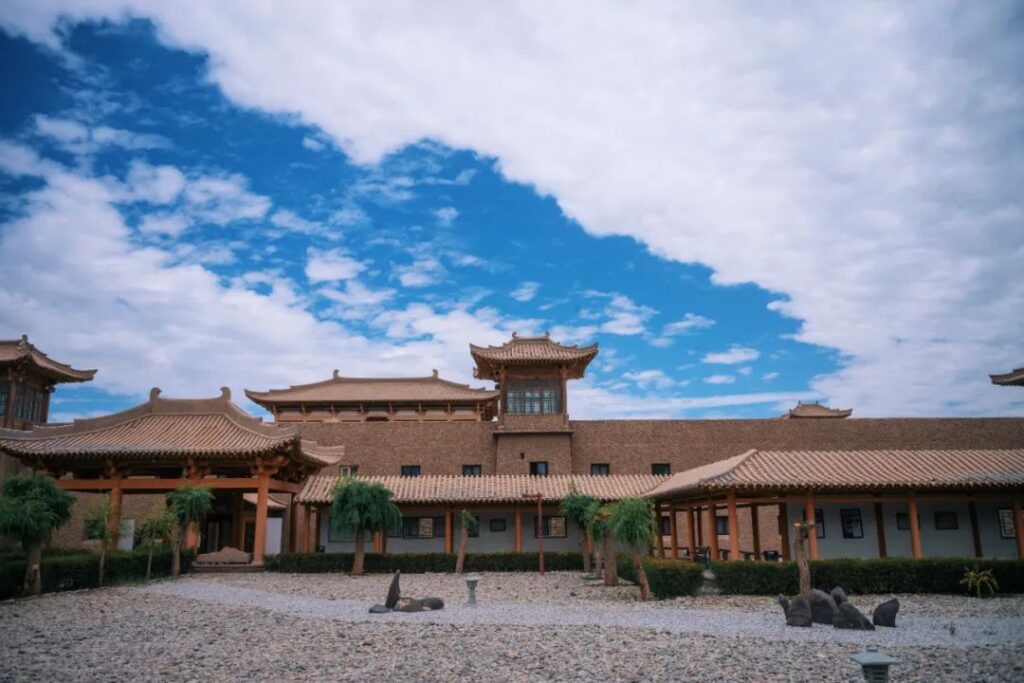
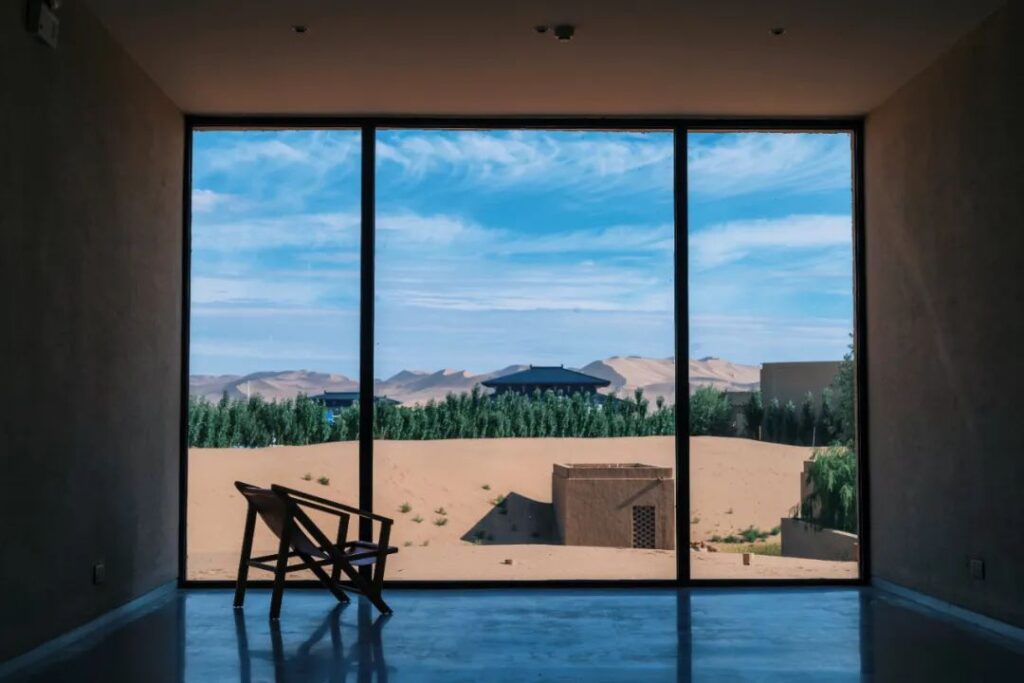
Alright, that’s the end of the guide. It’s time for you to start preparing for your Dunhuang trip.
